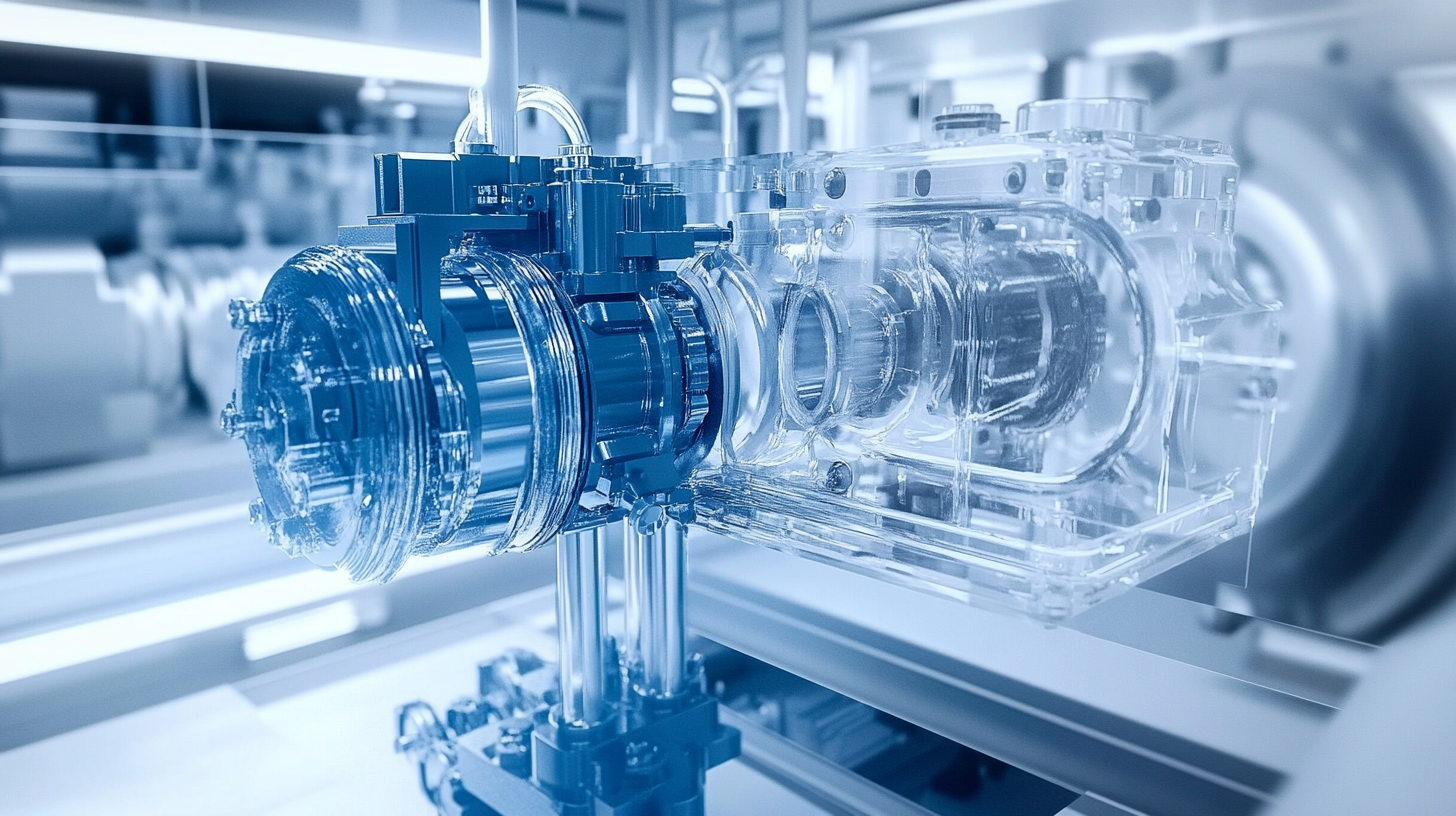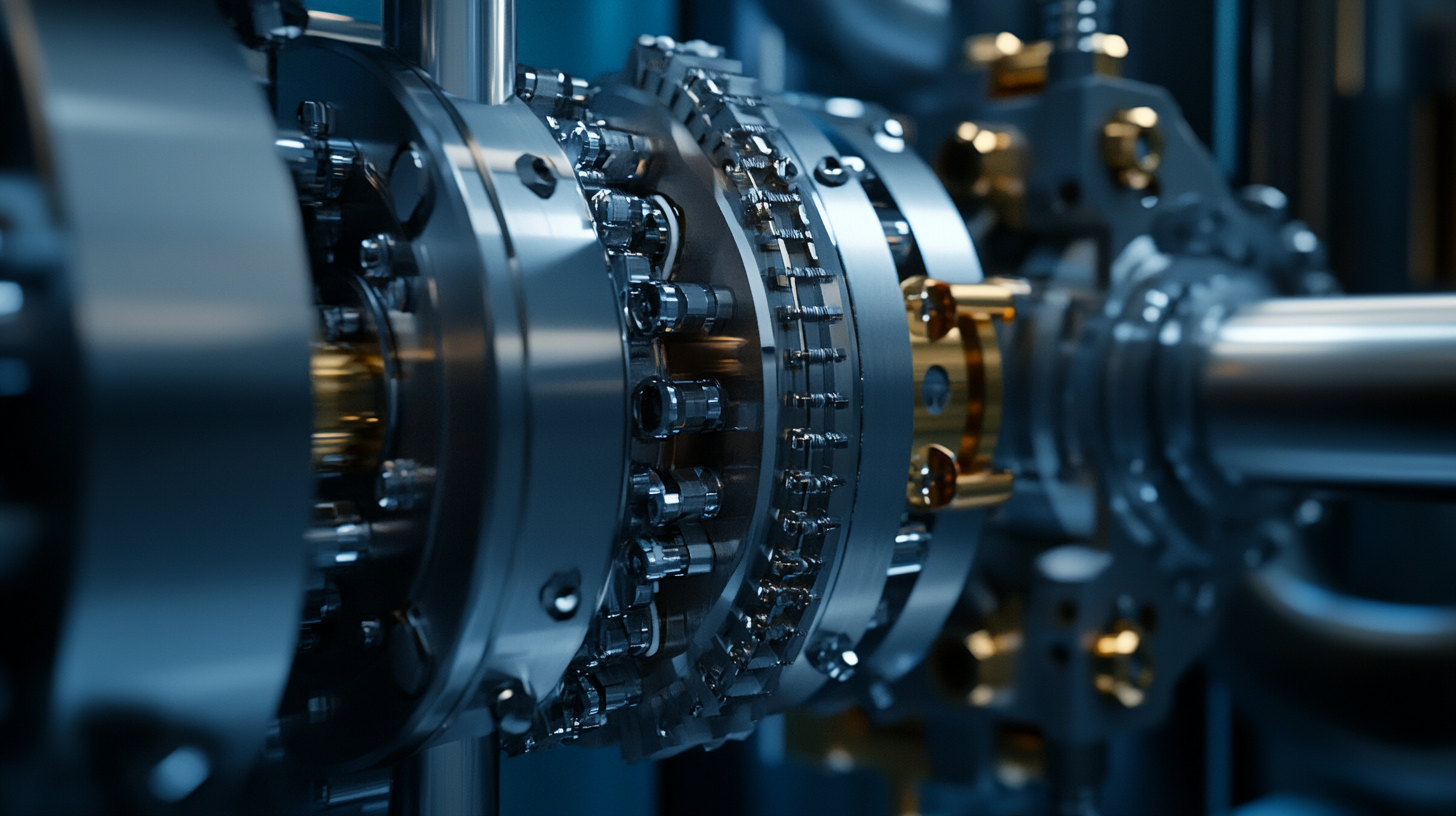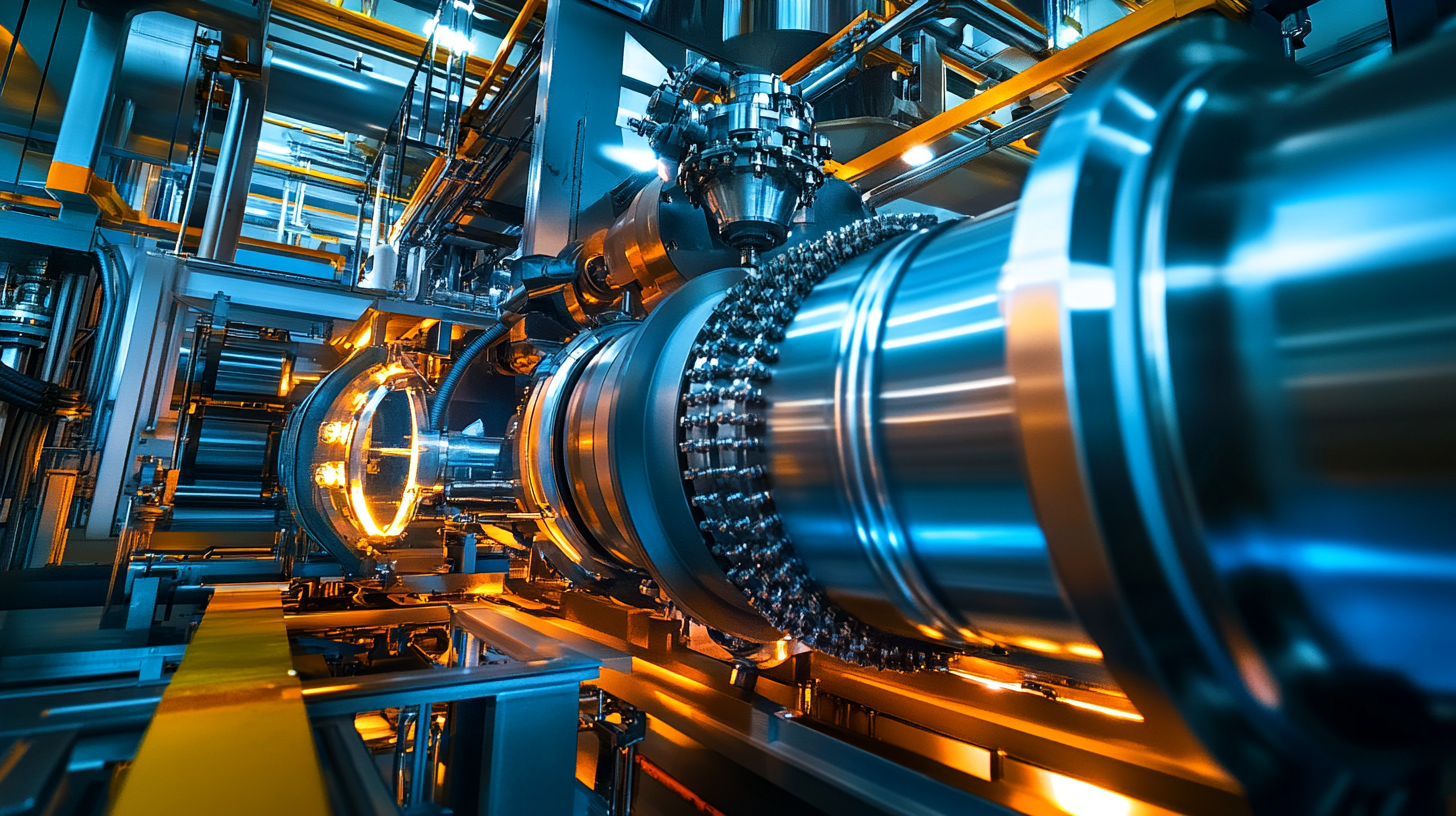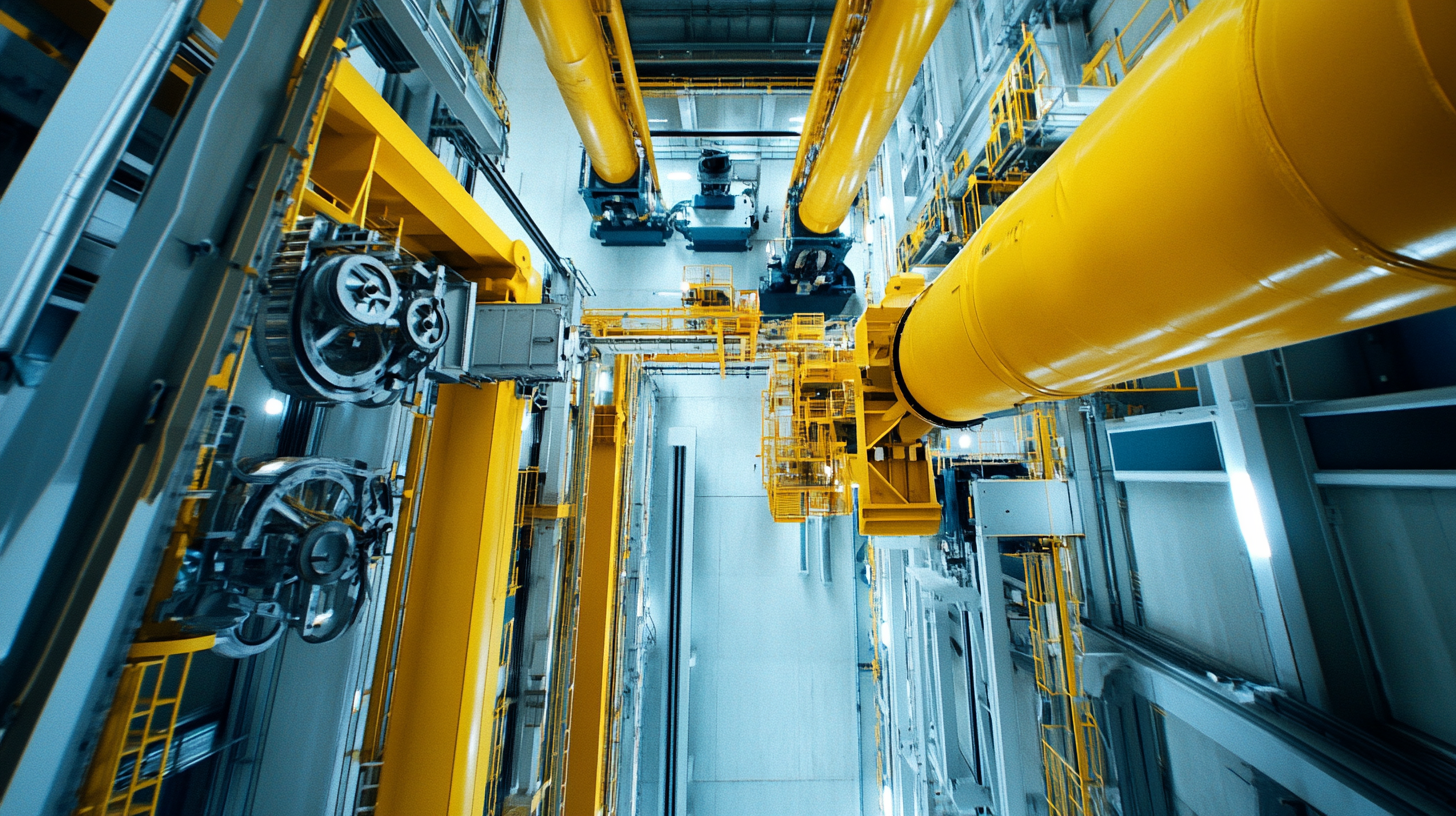Innovative Approaches for Optimal Hydraulic System Efficiency
Hey there! In today’s world of industry, getting the most out of Hydraulic Systems is super important. As fields like manufacturing, construction, and energy keep changing, there's a growing need for some next-level solutions that really improve how hydraulic systems work and how reliable they are. We’re talking about everything from new tech to better design ideas—these innovations are crucial for tapping into the true potential of these systems. It's all about saving costs while getting the most bang for your buck in output.
So, in this blog, we’re diving into some cool strategies that can really amp up Hydraulic System efficiency. We’ll be looking at the latest trends, tools, and techniques, and our goal is to give engineers and decision-makers some handy insights to help them implement hydraulic solutions that really work. From smart control systems to eco-friendly practices, we’ve got a whole range of methods to help turn hydraulic systems into shining examples of efficiency in today’s applications.

Emerging Technologies for Enhancing Hydraulic System Performance
You know, emerging tech is really shaking things up in hydraulic systems. I mean, we're talking about some seriously impressive jumps in efficiency and performance here. One of the coolest things happening is the use of IoT, or the Internet of Things, which lets us keep tabs on hydraulic systems in real time. Imagine having all that data on pressure, temperature, and fluid levels right at your fingertips! This helps operators make smart decisions that boost performance and cut down on energy use. Plus, that instant feedback? It’s a game changer for predictive maintenance, meaning less downtime and continuous tweaks to keep everything running smoothly. Then there’s the whole new vibe with advanced materials and fluid dynamics. There are synthetic fluids out there now that have better viscosity, which pretty much means less friction in hydraulic systems. That translates to smoother operations and less energy waste, which is always a win. When you pair these innovative materials with cutting-edge hydraulic designs—like variable displacement pumps and energy-saving actuators—you end up with systems that work way more efficiently. You wouldn’t believe how much it can lower operating costs and ramp up productivity for industries that get on board. And let’s not forget about automated control systems. They’re really changing the game for how hydraulic systems work. With machine learning algorithms in play, these systems can learn to optimize themselves based on different load conditions. It’s incredible! Not only does that drive efficiency up, but it also helps shrink our environmental footprint, which is something we’re all trying to focus on these days. Overall, these new technologies are pushing the envelope for hydraulic system performance; they're really setting a whole new benchmark for what’s possible in the field.

Integrating Smart Sensors for Real-Time Efficiency Monitoring
You know, the way smart sensors are being integrated into hydraulic systems is really changing the game for efficiency monitoring. It’s pretty wild how they enable real-time data collection and analysis. A report from the International Energy Agency mentions that hydraulic systems actually use up a substantial chunk of energy in industrial fields, which is why optimizing them is super important for saving costs and boosting operational efficiency. With these smart sensors, companies can keep an eye on essential factors like pressure, flow rate, and temperature. This means they can make quick adjustments and perform preventative maintenance based on the live data they gather – pretty handy, right?
Recent studies have shown that bringing smart sensor tech onboard can bump up hydraulic system efficiency by as much as 30%. How cool is that? These sensors give detailed insights into how the systems are functioning, allowing operators to spot potential problems before they blow up into bigger headaches. For instance, using predictive analytics based on real-time data lets teams schedule maintenance during those quiet hours, so they don’t end up losing valuable production time. Plus, being able to monitor system health from afar really helps improve decision-making and resource management. It’s all about creating that proactive maintenance vibe, you know?
Oh, and let’s not forget about the environmental side of things! According to a report from the EPA, if we optimize energy use in hydraulic systems with real-time monitoring, we could cut down greenhouse gas emissions by over 15%! By taking these innovative steps, industries can not only nail down operational excellence but also get in line with sustainability goals, moving us closer to a greener future.

Adaptive Control Strategies for Dynamic Hydraulic Systems
You know, adaptive control strategies are really shaking things up when it comes to how dynamic hydraulic systems work. They’re not just improving efficiency and performance in various industrial applications; they’re kind of revolutionizing the whole game. Unlike those old-school fixed control methods, adaptive control is all about being flexible. It can tweak system parameters on the fly, reacting to whatever changes might be happening in real-time—like shifts in operational conditions and loads. This kind of adaptability allows hydraulic systems to really optimize energy use, cut down on waste, and keep things running smoothly even when demands are all over the place.
One of the coolest things about adaptive control in hydraulic systems is how well it can predict and respond to disturbances. With all those fancy algorithms at play, these systems can pretty much self-tune based on the feedback they receive. This is super handy in environments where things can get a bit unpredictable, making it a breeze to integrate into processes like manufacturing or automation. So, when you’ve got machines with adaptive control, they’re able to keep their precision and reduce downtime, which is a win for cost savings and overall productivity.
And it gets even better! By using adaptive control strategies, you can actually embrace smart technologies, like IoT sensors and machine learning. These hydraulic systems are not just making real-time adjustments; they’re also learning from past performance to boost predictive maintenance. This means that not only do the hydraulic components last longer, but they also help optimize fluid dynamics—huge benefits for making hydraulic systems more efficient in today’s industrial landscape.

Sustainability Practices in Hydraulic System Design and Maintenance
You know, in today’s world of hydraulic system design, there’s a real push for sustainability. With the global trend towards renewable energy—especially with all the cool stuff happening in wind power technology—it’s clear that we really need hydraulic systems that are not only efficient but also good for the environment. Recent studies have shown that using high-efficiency hydraulic parts can cut energy use by around 20%. That’s a pretty big win for both performance and the planet!
Taking care of hydraulic systems sustainably is all about making parts last longer and cutting down on waste. If we stay on top of regular check-ups and use some predictive maintenance techniques, we can actually extend the life of these systems by 30% or even more. This means we won’t have to replace them nearly as often, which is a huge plus for reducing our environmental impact. Plus, some of the new filtration systems out there are amazing at keeping fluids clean. Not only does this boost system efficiency, but it also helps lessen the amount of fluid waste we deal with.
Now, when we look at moving from traditional hydraulic systems to greener designs, embracing new technologies is key. These days, there’s a noticeable shift towards electric drive systems, and they’re really making a dent in the carbon footprint of hydraulic operations. For instance, fresh developments in electric motor technologies could slash operational costs by up to 25% compared to the old-school hydraulic methods. It’s exciting to see companies stepping up their game with eco-friendly practices—this focus on innovative hydraulic solutions is definitely going to push efficiency and sustainability forward across various industries.
Case Studies: Successful Implementations of Innovative Hydraulic Solutions
You know, in recent years, we've seen some pretty amazing advancements in the efficiency of hydraulic systems across a bunch of different industries. It’s really cool how companies are coming up with innovative solutions to tackle their specific challenges. There are some great case studies out there that illustrate exactly how businesses are jumping on the latest tech to boost their hydraulic systems. The results? Big performance improvements and savings, for sure!
Take, for example, a manufacturing plant that decided to integrate smart sensors into their hydraulic machinery. These little gadgets give them real-time updates on pressure and fluid levels, which helps with predictive maintenance. Because of that, they’ve cut down their downtime significantly. They even set up a proactive maintenance schedule based on data analytics, leading to a whopping 25% increase in system efficiency. They found and fixed problems before they became expensive disasters, which is just smart!
Then there’s a construction company that switched to an advanced hydrostatic transmission system. By using variable displacement pumps and motors, they nailed down precise control over how hydraulic power is distributed. This wasn’t just a tech upgrade; it really boosted the energy efficiency of their equipment. Plus, they performed way better in tough terrain. The numbers speak for themselves: just by making that change, they slashed their fuel consumption by over 30%. That's a game changer for their profits and makes their operation way more sustainable!
These examples really show us that when you bring in innovative hydraulic solutions, it can totally elevate system efficiency and support productivity and sustainability across so many sectors.

We have over 30 years of experience in designing complete hydraulic systems, repairs and distribution of fluid power equipment and parts.
FOLLOW US ON :
Contact Details
Address:
4020 SE 45th CT.
Ocala, FL 34480
Phone No:
Email:
sales@cunninghamfluidpower.com

